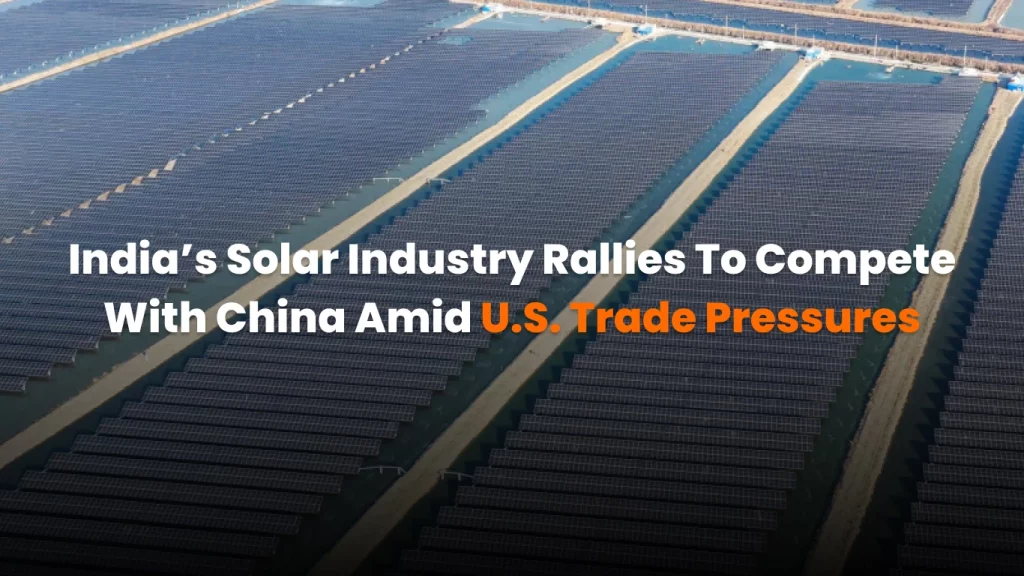India’s solar industry and manufacturing industry is gaining momentum, emerging as a serious contender to challenge China’s dominance, despite mounting U.S. tariffs and global supply chain hurdles.
Rising domestic capacity fueled by local demand and policy support
In a government-subsidized zone on the outskirts of Jaipur, ReNew’s solar manufacturing facility produces 4 gigawatts (GW) of modules per year, enough to power roughly 2.5 million homes, and employs nearly 1,000 people. The facility has become a powerful symbol of India’s growing solar ambitions.
Over the fiscal year ending in March 2025, India more than doubled its module manufacturing capacity to 74 GW and tripled solar cell production. This surge reflects both government incentives, such as import restrictions and local content mandates, and a strategic pivot toward domestic markets amid deeper global uncertainties.
U.S. tariffs and a domestic market to the rescue
In August, U.S. President Trump’s administration imposed 50% tariffs on Indian solar goods, a substantial blow to exports, as India previously sent nearly one-third of its solar modules to the U.S. Despite this, domestic demand has provided a crucial buffer.
Energy analyst Charith Konda of the Institute for Energy Economics and Financial Analysis observed that India’s vast internal market “is a huge industry that can absorb these modules and cells…we are not necessarily as export dependent as other countries are.” Companies have redirected attention to serving Indian consumers, with Vega Solar shifting focus away from exports toward domestic applications for off-grid modules used in camping, electric fences, and agriculture.
Supply chain progress and targets for 2030
India’s reliance on Chinese solar components remains significant, but is waning. Imports of solar cells and modules from China dropped by more than one-third in Q1 of 2025. Analysts affiliated with Ember foresee that, by 2030, India may only need to import polysilicon, with most other components being manufactured domestically.
The country continues to pursue an ambitious goal of 500 GW of renewable energy capacity by 2030, bolstered by 170 GW already in the pipeline.
Overcapacity risks and export challenges
Despite rapid expansion, a Reuters report warns of a looming solar panel glut within India. High U.S. tariffs, combined with slowing domestic bidding, are creating a surplus risk. As of late 2025, India’s module manufacturing capacity stood at 74 GW, with projections reaching up to 190 GW by 2027. However, many factories are operating at only 25% capacity, suggesting severely underutilized infrastructure.
Without effective export channels or a sufficiently strong domestic off-take, analysts caution India faces margin pressure and rising stockpiles.
India’s solar sector is at a pivotal juncture. Strategic policy support, rising local demand, and ramped-up manufacturing have fueled extraordinary growth, even as U.S. tariffs threaten export viability. The path ahead will require balancing capacity expansion with viable markets—both domestic and international, and deepening self-reliance in supply chains to diminish dependency on imported inputs.
With nearly half of its renewable capacity already installed and a strong pipeline ahead, India’s solar industry has weathered initial external shocks. Yet the coming years will be crucial to determine whether that momentum translates into a resilient, self-sustaining solar manufacturing powerhouse.




